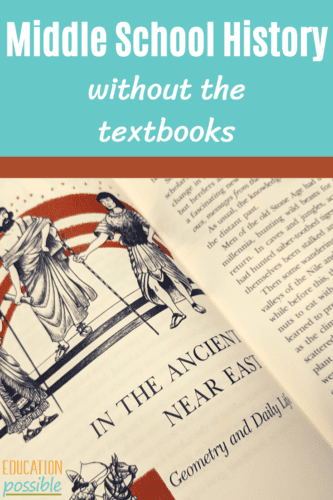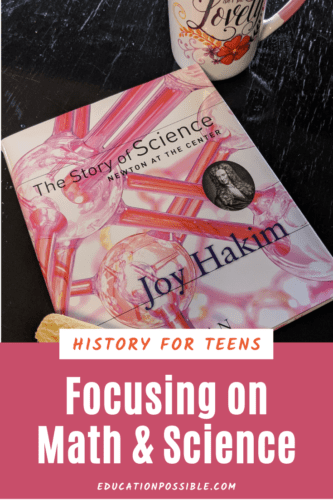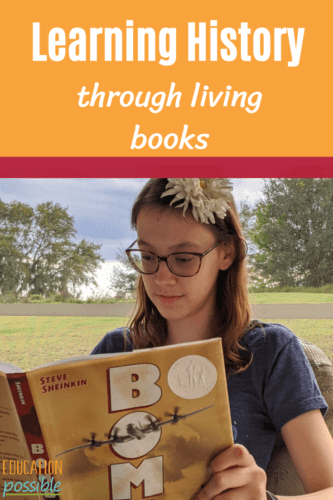BookShark History is an Interesting New Way to Look at the Past
One thing I absolutely love about the BookShark history curriculum, called the History of Science, is its unique angle on a subject that many kids find boring.
As you know, teaching history can be hard. It’s rarely a teen’s favorite subject and most homeschool programs move through the centuries chronologically, focusing on three common time periods while highlighting the same major world events, which can get extremely repetitive.
If you’re starting to worry because that’s how you’ve always taught history to your kids, don’t worry, I’m right there with you. It’s how I’ve done it in my home school for years.
But what if there was another method? A unique lens to study history and tools to help keep kids engaged?
Luckily, there is a different way to look at the past.
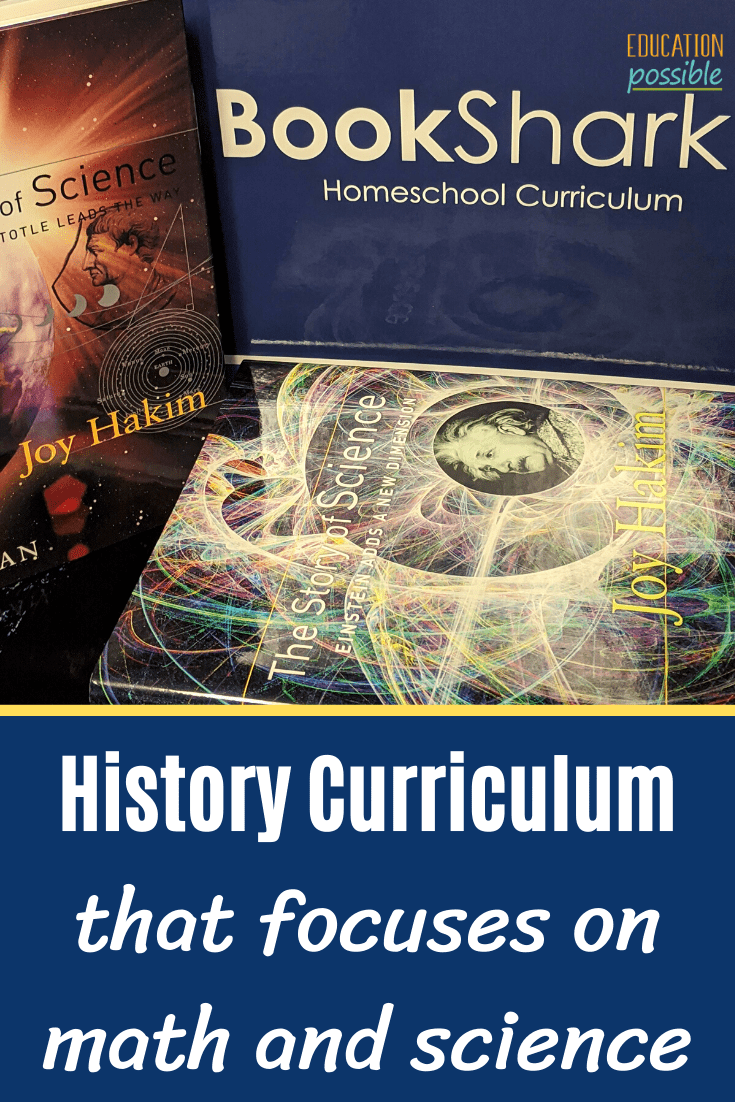
As a BookShark Brand Ambassador, I received a copy of their Level J program in exchange for monthly reviews. All opinions expressed are mine – my disclosure policy.
BookShark History Isn’t Just Chronological
I have to tell you that it blew my mind to think of teaching history other than slowly moving chronologically through a specific time period. How will I know that I’m covering everything? How will I know what to focus on? What will I call it on our transcript?
As I thought about it more, I realized that by middle school, most kids have already studied all major sections of history because they’ve moved through time periods multiple times. And, they’ll need to revisit both World history and American history in high school.
That means now’s the perfect time to do something different.
This year, we are using BookShark’s History of Science, which is a part of their Level J All-Subject Package.
Unique Middle School History Lessons
Think of it as looking at history through a different lens. Kids still learn about major events and time periods, but in this curriculum, it’s not only focused on the physical, it’s also about ideas. With a heavy focus on math and science, it highlights famous inventors and inventions, while still spanning centuries.
When we hear the word inventions, we think of tools like the cotton gin or the light bulb. But remember, everything we know was discovered/invented/created at some point in history. So, chemistry, geometry, astronomy, as well as the periodic table and its elements, were also inventions.
By studying history with this focus, teens will learn how subjects were created and studied. Throughout the curriculum, students see that as math and science advanced, discoveries and inventions exploded.
Throughout history, when people couldn’t explain something, like a phenomenon, they created or attributed it to a myth. Over time, someone thought about it, studied it, and declared a scientific reason behind it. Then, another scientist looked at it further and either confirmed the reasoning or came to a different conclusion.
Walking through scientific and mathematic advancements like this is different than just studying events in history. Teens can clearly see the progression of ideas, how scholars were driven to reach further.
When you look at history this way, kids are able to see how changes in culture, education, and accepted beliefs allowed and even directed famous inventors toward new findings. So, while you may have learned about important inventions in previous history studies, if you only look at history through limited, time-based criteria, you can miss a lot of the backstory and work that was a part of the invention.
When you study history with this type of focus, it’s easy to see how history, science, and mathematics all affect one another.
What’s Included in BookShark History of Science
Instead of relying on a large standard textbook, BookShark’s History of Science uses a number of engaging non-fiction books that do a great job explaining complex ideas.
Your teen will read books like:
- Archimedes and the Door of Science
- The Story of Science: Aristotle Leads the Way
- Bomb
- The Clockwork Universe
- Stuff Matters
- String, Straightedge, & Shadow
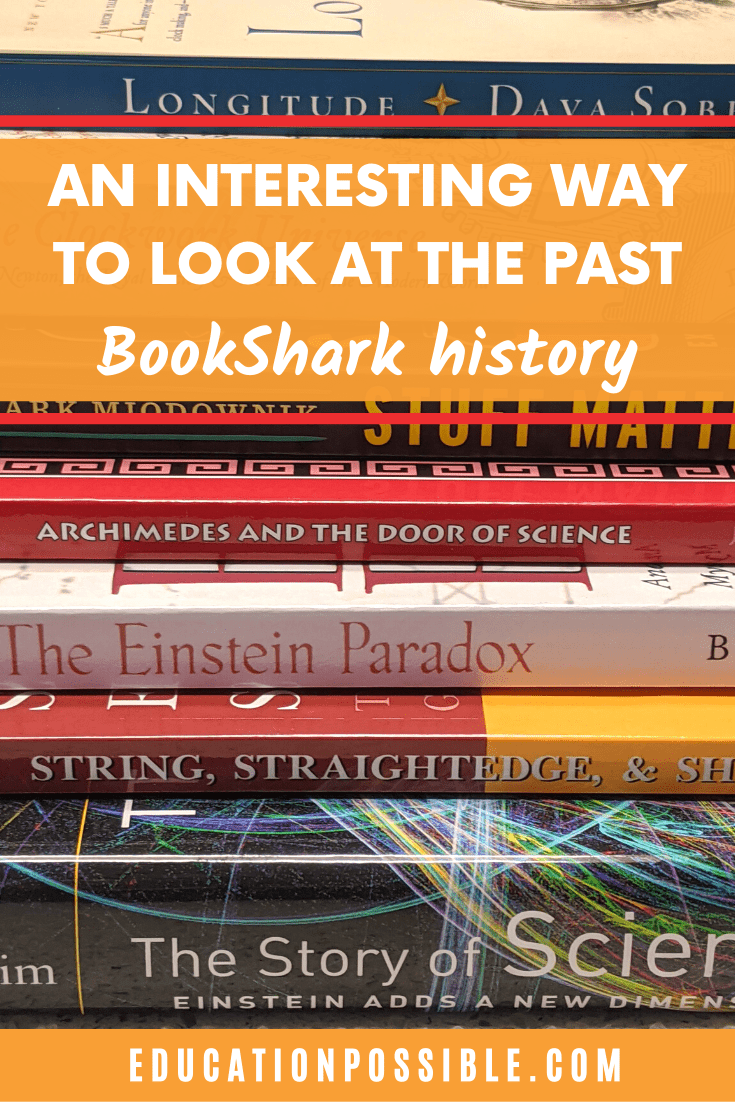
History Topics
As you can imagine, there are so many awesome inventions and discoveries within the books your teen will be reading, that it’s impossible to list them all here. Here are a few of the ideas and physical items your older kids will be studying.
Things like:
- Time – the invention of clocks (encompassing 12 hours, 60 minutes and 60 seconds), the calendar, how days are made up of 24 hours and weeks made up of 7 days
- Using shadows and ratios to measure things like the pyramids
- How the Mesopotamians were instrumental in the creation of the wheel
- The discovery of multiplication by Pythagoras
- Simple machines like the lever (here are some lever activities to try), pulley, wedge, wheel & axle, screw, and siphon
- How the aqueducts and roads were built
- The many inventions from Ancient China, like the compass, wheelbarrow, and canals with locks
- Gutenberg’s printing press
- What Magellan’s expedition had to do with the history of science
- And TONS more!
Making History Fun with Hands-on Activities
Regardless of the curriculum you choose, I always recommend doing what you can to make it work best for your child. In our house, that often means adding in some fun, hands-on activities to bring the lesson to life. If you’re using BookShark History of Science, here are some ideas you can use to make your studies even more interactive.
- Look at something as simple as growing potatoes and research how it relates to history. How has this one crop and the process of planting it affected the world? Kids can give a presentation on their findings.
- Have your teen choose their favorite invention (remember, they’re all inventions) to study further. For example, the steam engine. Take a look at its history, the changes it took, challenges it faced to be created, etc. What is its place in history? If possible, go see one in person. Or look for videos online to get a better view of it.
- While studying simple machines, build your own catapults to launch some smaller objects and learn about trajectory.
- Complete a displacement test as you learn about how Archimedes figured out whether the goldsmith was tricked the King by mixing silver in with his crown.
- Build an edible Roman road.
- Take a closer look at the telescope and microscope, either in real life or online and use them to take a closer look at something.
- Make your own paper.
Hopefully, you’ve been inspired to step away from the standard way of teaching history and instead embrace a whole new way to study the past with your teen.
We’ve been using this history curriculum as a part of BookShark’s Level J All-Subject Package, which includes history, math, language arts, and science.
